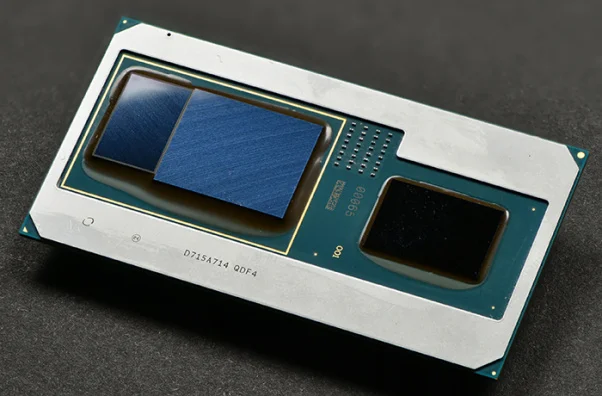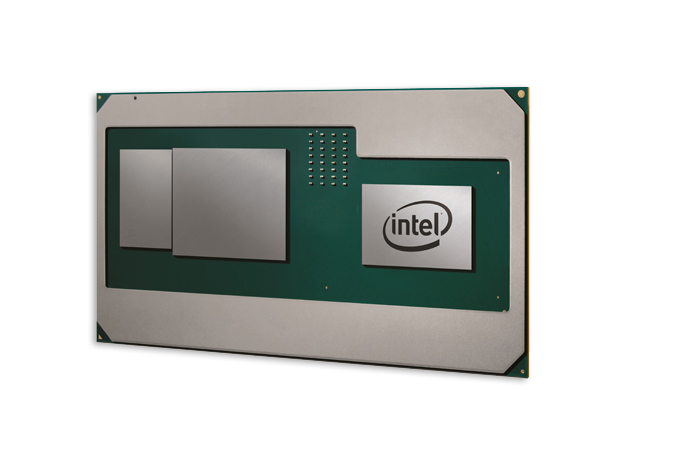Industry impacting announcements are expected in the realm of technology, this past Nov when AMD and Intel announced their partnership to bring Radeon graphics to Intel processors in 2018, it was definitely a surprise to many, but full spec details were kept a bit on the hush at that time.
What has come to fruition present day 2018 is the Kaby Lake-G processor which is officially dubbed as being the 8th Generation Intel Core Processors and is integrated with Radeon RX Vega M Graphics. Here's uniqueness for you, the processor is not one single silicon but is constructed into a multi-chip package.
Who would have thought we would witness two rival chip manufacturers actually play nice with each other. From all of my gathered information, here's what you need to know.
The Kaby Lake-G is actually the very first 8th generation H-series processor that'll have 4-cores and 8 threads and added to the CPU die will be a customize Vega graphics processor and a 4GB HMB2 (high bandwidth memory) memory. In looking at the graphic processor in detail, the Vega M GPU is actually a discrete die that connects through a 8 lane PCIe 3.0, similar to what you'll find in most desktop computers or even laptops when it comes to discrete graphics. The GPU will have as many as 24 CU's ( compute units) and 1536 stream processing. The graphics card mirrors the same features found on the current Radeon graphics card that includes FreesSync technology, video encode and decode and Radeon display engine.
The actual Vega die is 4GB stacked of HBM2 with a 1024-bit memory bus. The HBM2 technology itself is powered lower than the GDDR5 technology which requires a lot more power. The entire memory is connected to a Vega GPU through a EMIB, which is acronym for embedded multi-die interconnect bridge.
In examining GPU specs in detail, you'll be presented with two options, the Vega M GH which will have 24 compute units, 1536 stream processing, base clock measuring 1063 MHz, a Boost clock measuring 1190 MHz, a 204.8 GB/s memory bandwidth, 3.7 Teraflops, 64 pix/clock and 4GB HBM2. Then we have other GPU option, the Vega M GL which will have 20 compute units, 1280 stream processing, 931 MHz base clock, 1011 boost clock, memory bandwidth measuring in at 179.2 GB/s, 2.6 teraflops, 32 pix/clock, and same as the other variant it to have 4GB HBM2.
Now when it come to the actual processor we won't examine every single Kaby Lake iteration as there are 5 in total, 4 Core i7 series and a Core i5, so lets examine the top tier Kaby Lake Core i7-8809G variant. It will have 4 processing cores and 8-threads, a 3.1 GHz base clock, a 4.2GHz boost clock, 8MB cache, DDR4-2400 memory channel, unlocked, meaning its over clockable, a Vega M GH discrete graphics, a 100 Watt TDP (thermal design power). The Kaby Lake Core i5 processor as expected spec numbers are below the Core i7 variant, starting with 2.8GHz base clock, with a 3.8GHz boost clock 6MB cache size, still having a DD4-2400 dual -channel, Vega M GL, 65 Watt TDP.
Combing CPU and GPU is made possible by customizing GPU design that actually hooks directly into the processor which enables Intel to actually manage power consumption directly across both the CPU and GPU on the same chip package. Another interesting piece of technology is Intel Dynamic Tuning, this actually monitors the status of both the graphics and primary processing systems on the G-series part to gather information on power draw and load levels. With that information, users can actually adjust the power accordingly that's being delivered to each part, thus controlling performance which you normally could not do with traditional CPU and discrete GPU's.This all leads up to more power being delivered.
Intel introducing their 8th Generation Core Processor with Radeon RX Vega M Graphics is potentially an industry game changer, questions that needs answering is how will motherboards house such a processor and how will it impact gaming performance. I'm ready for the reviews, bring it on Intel.






